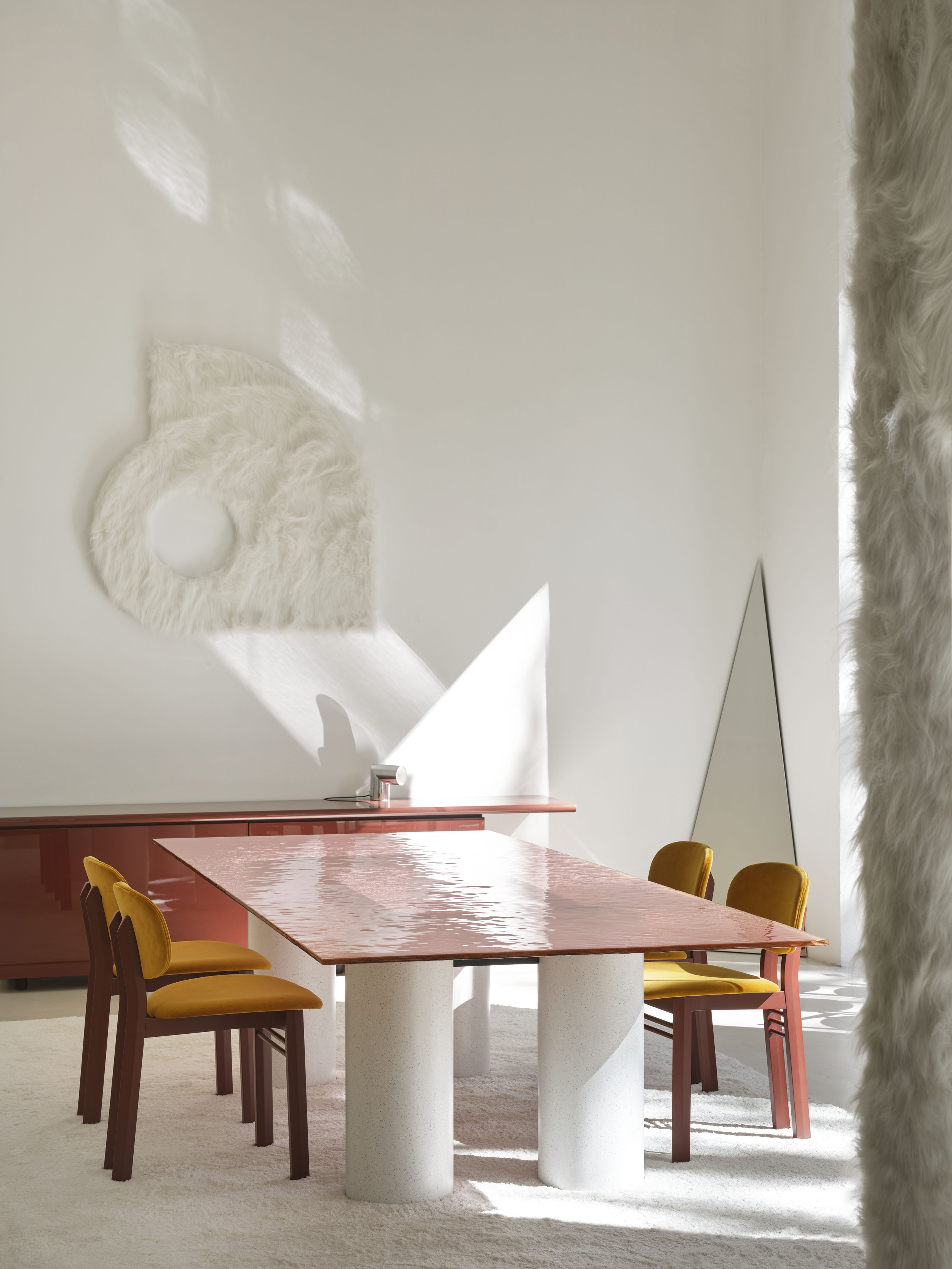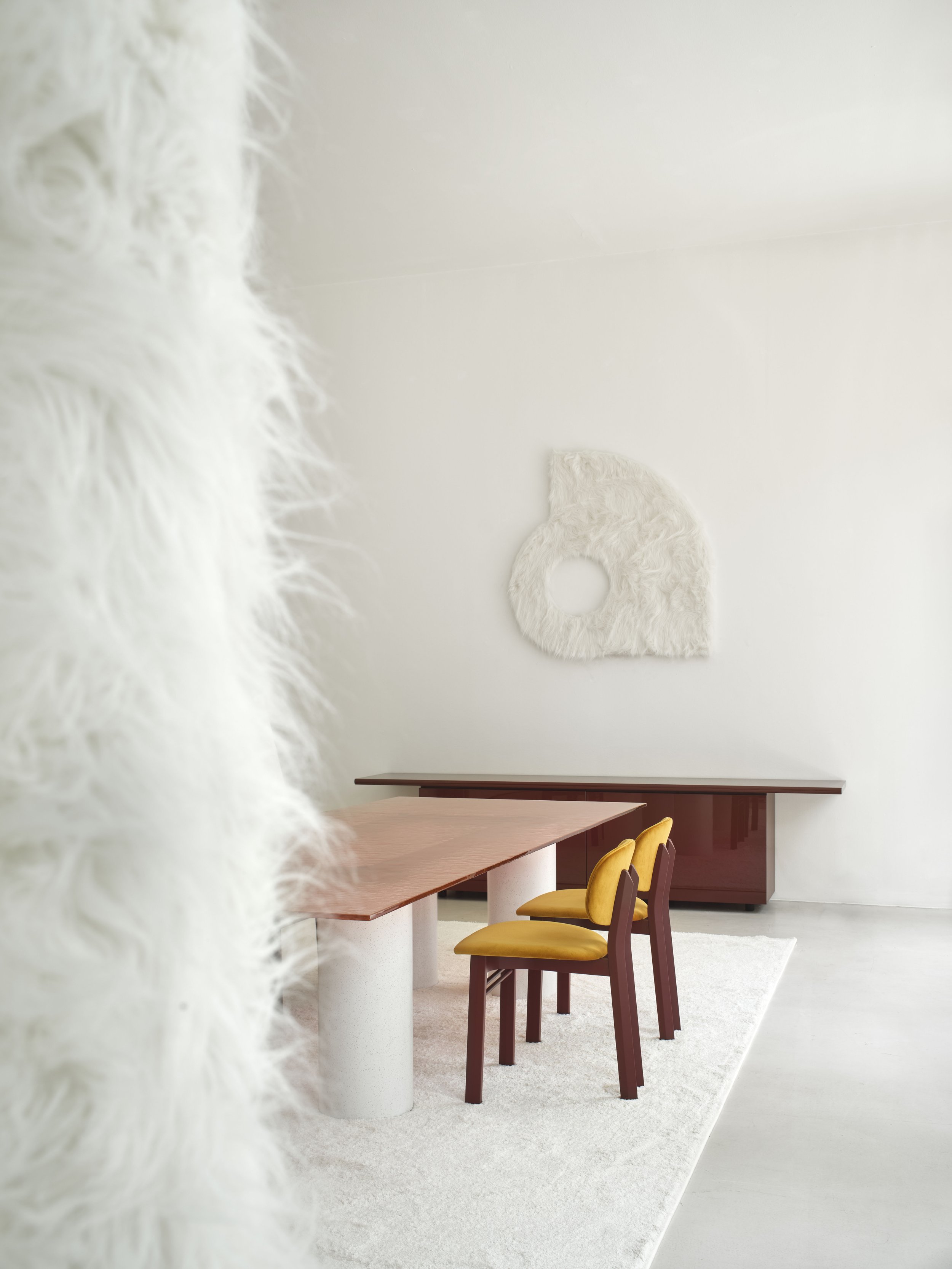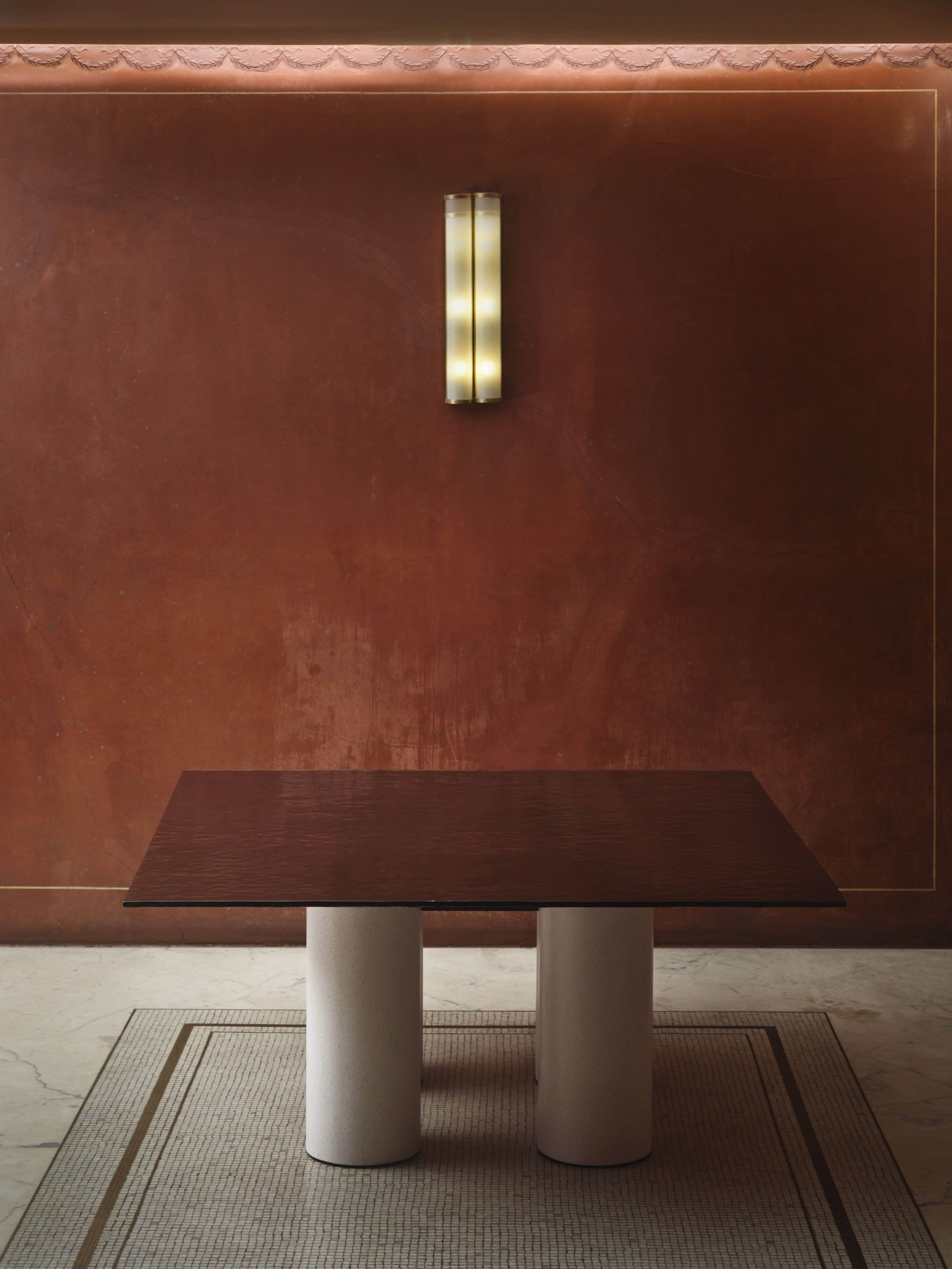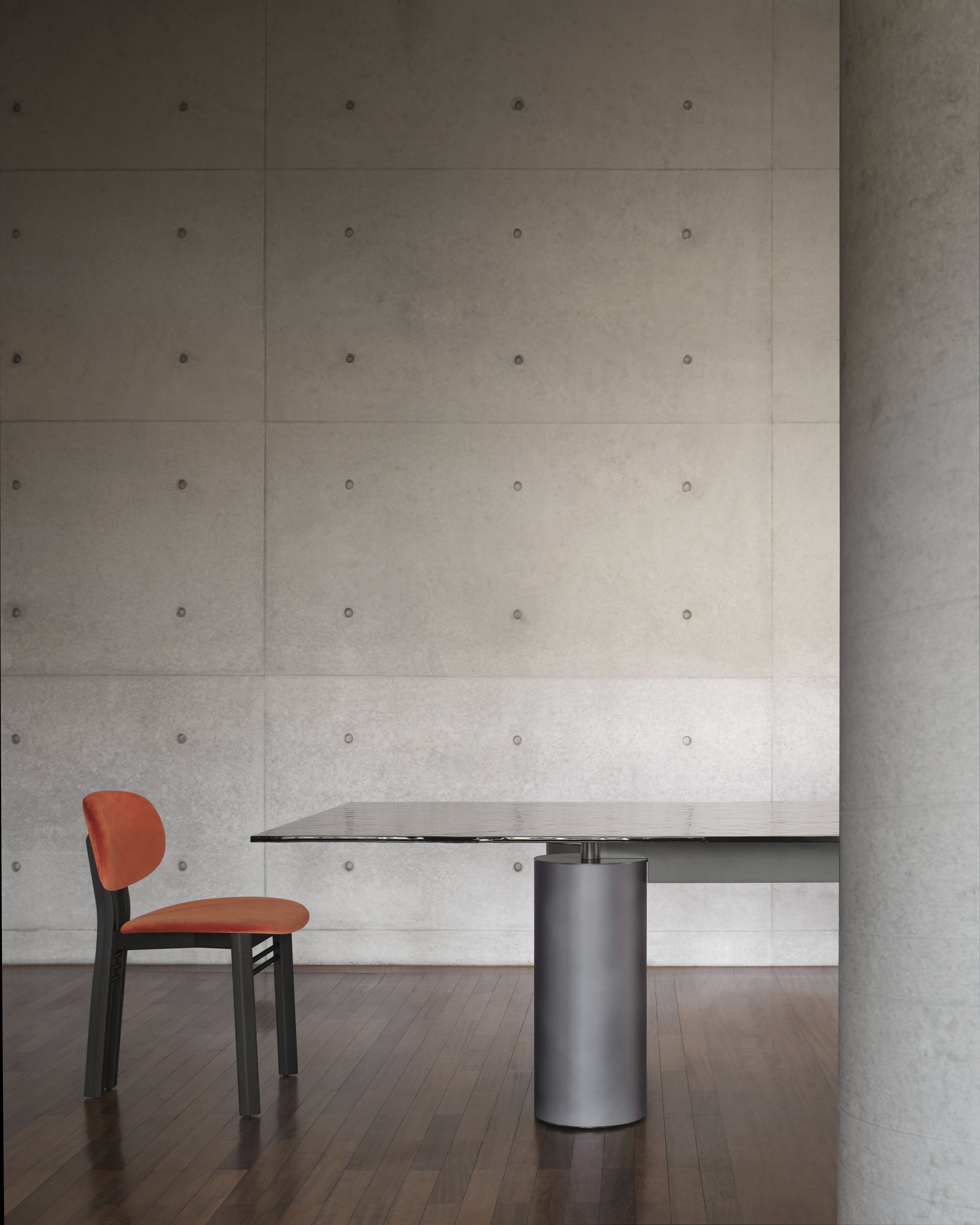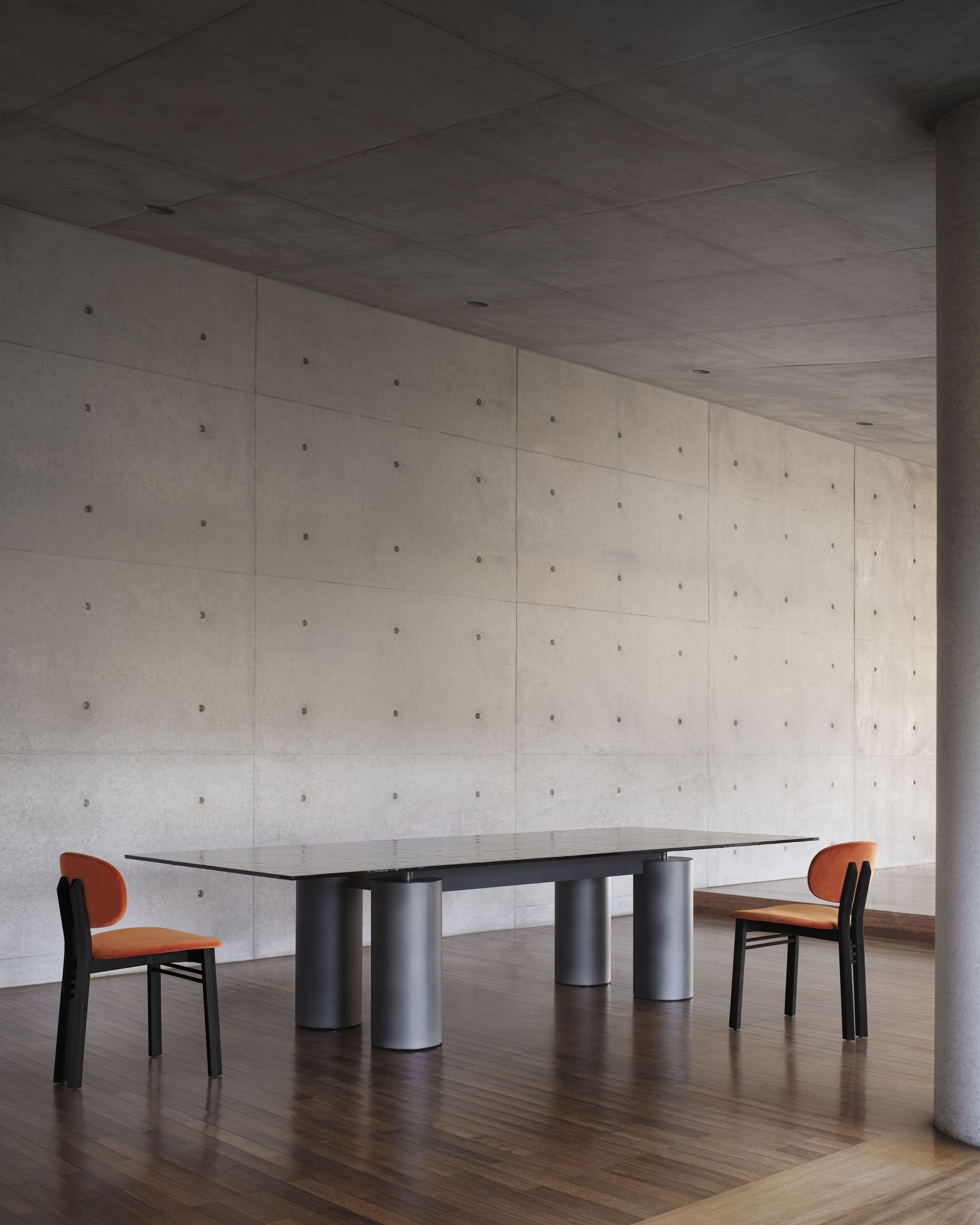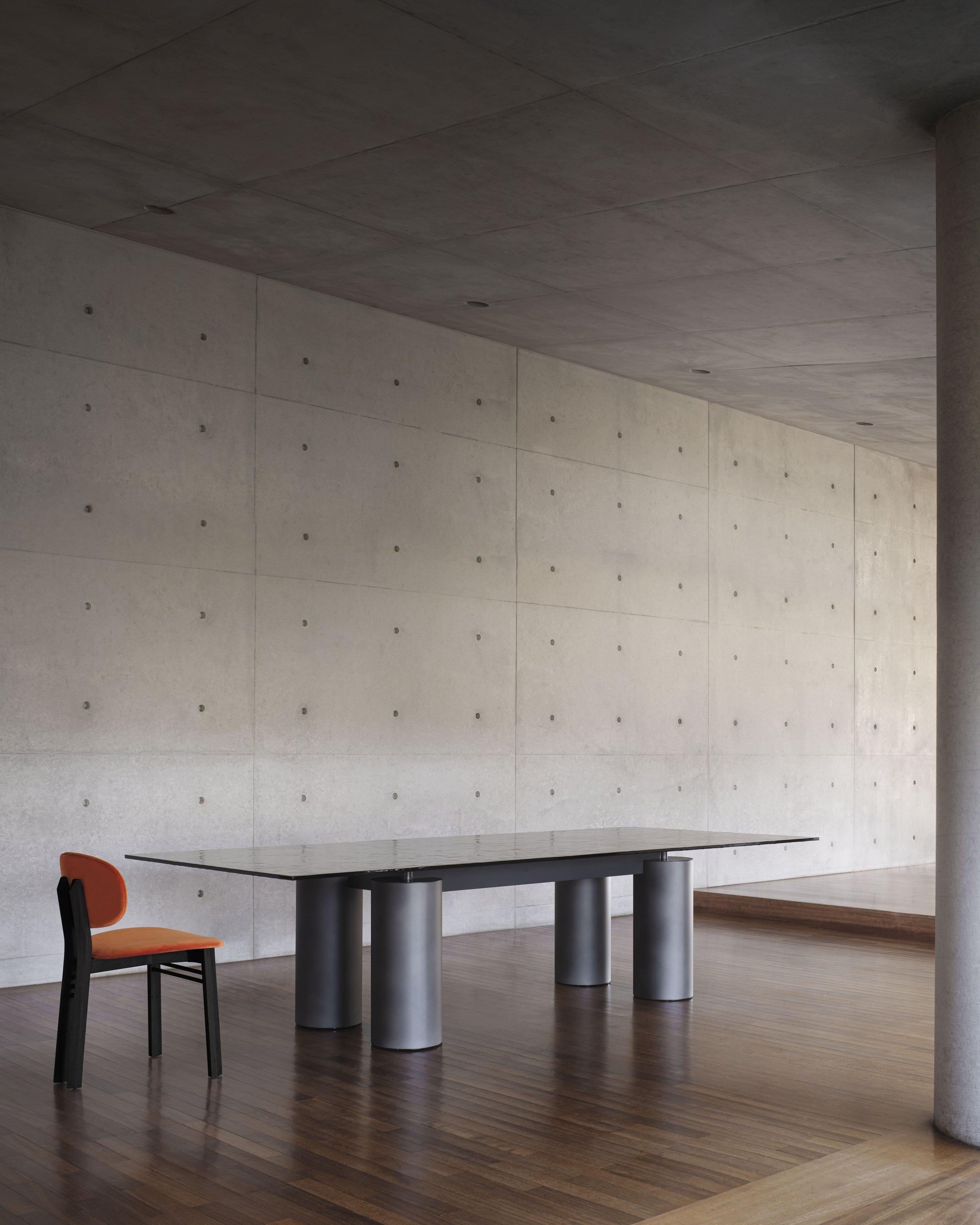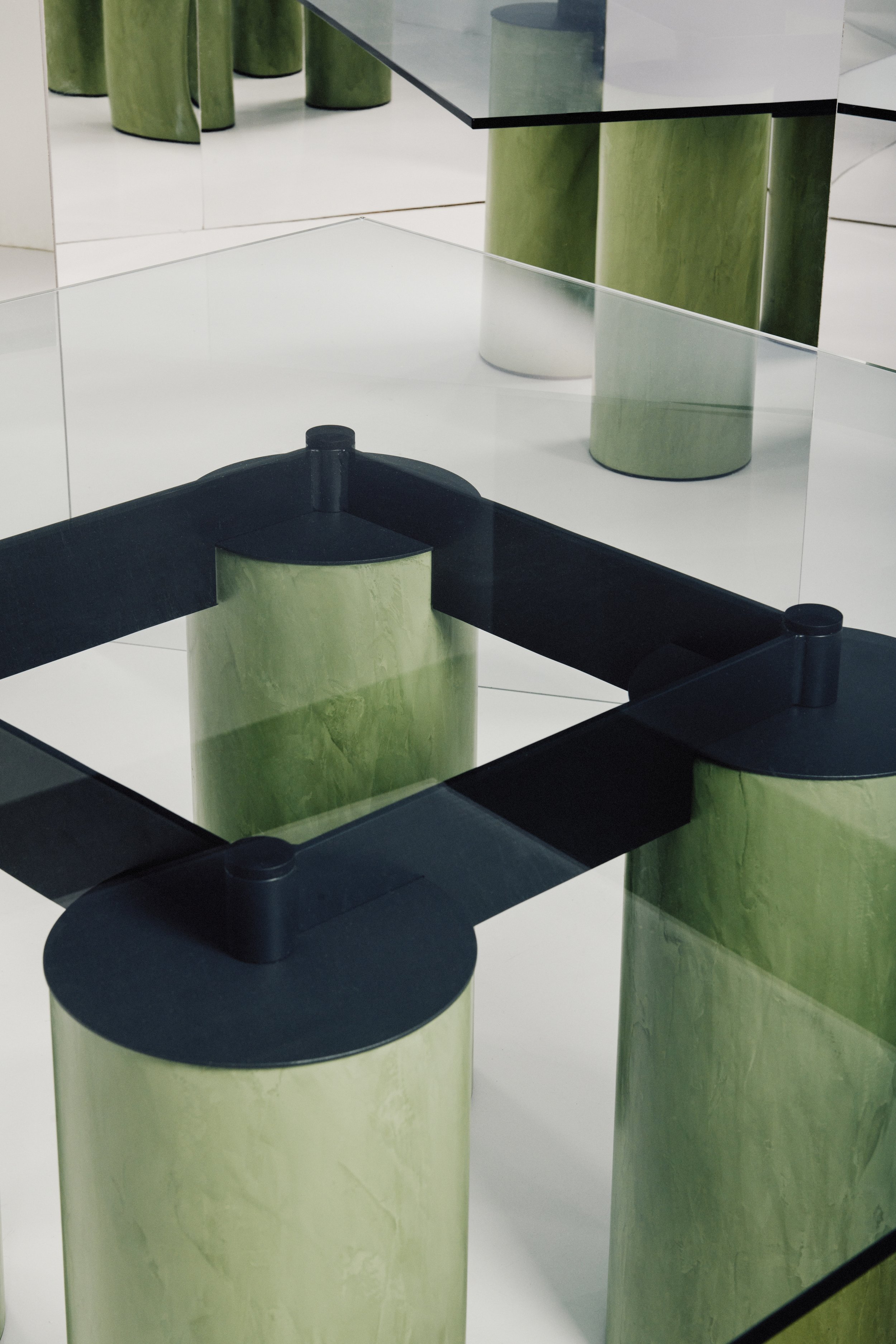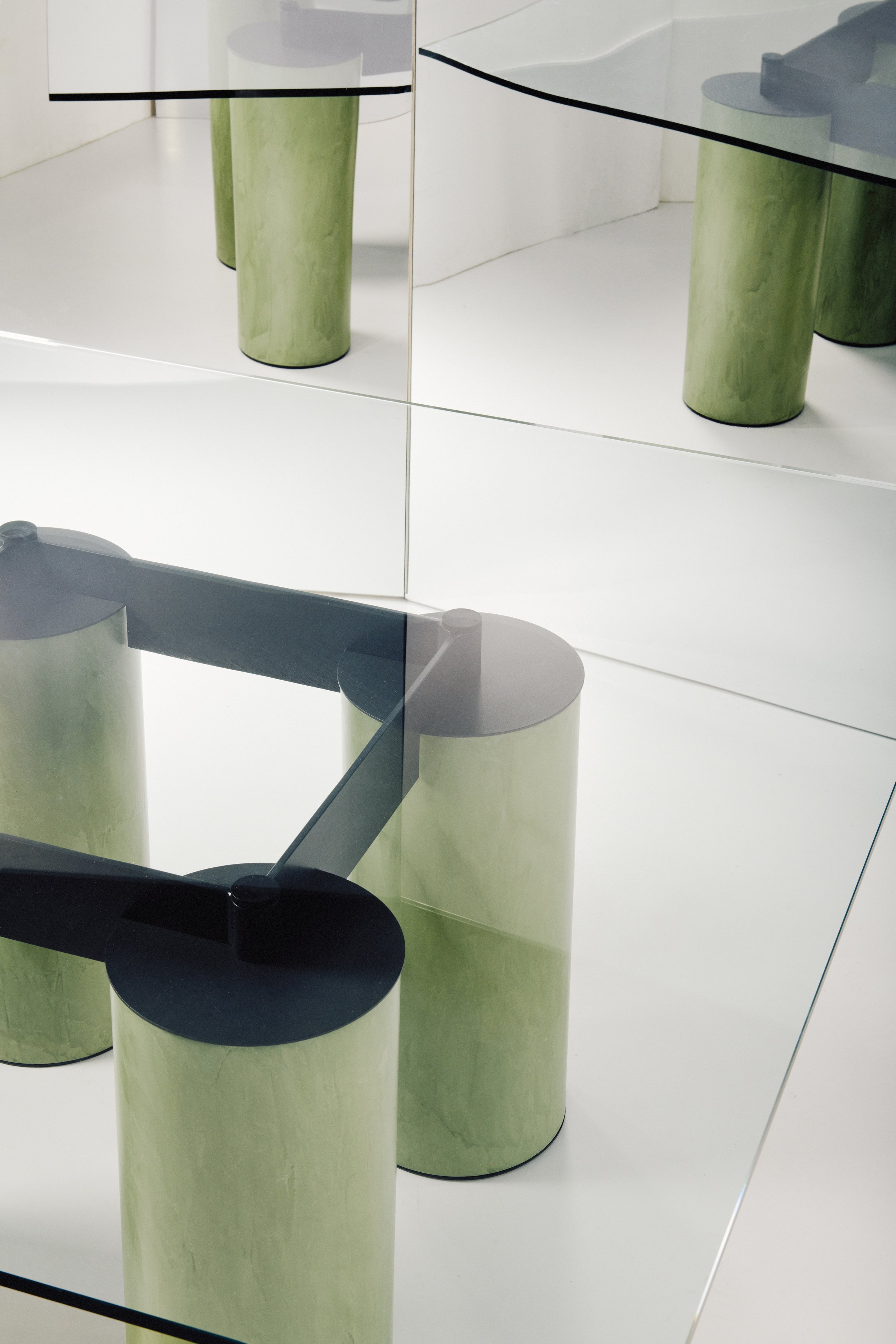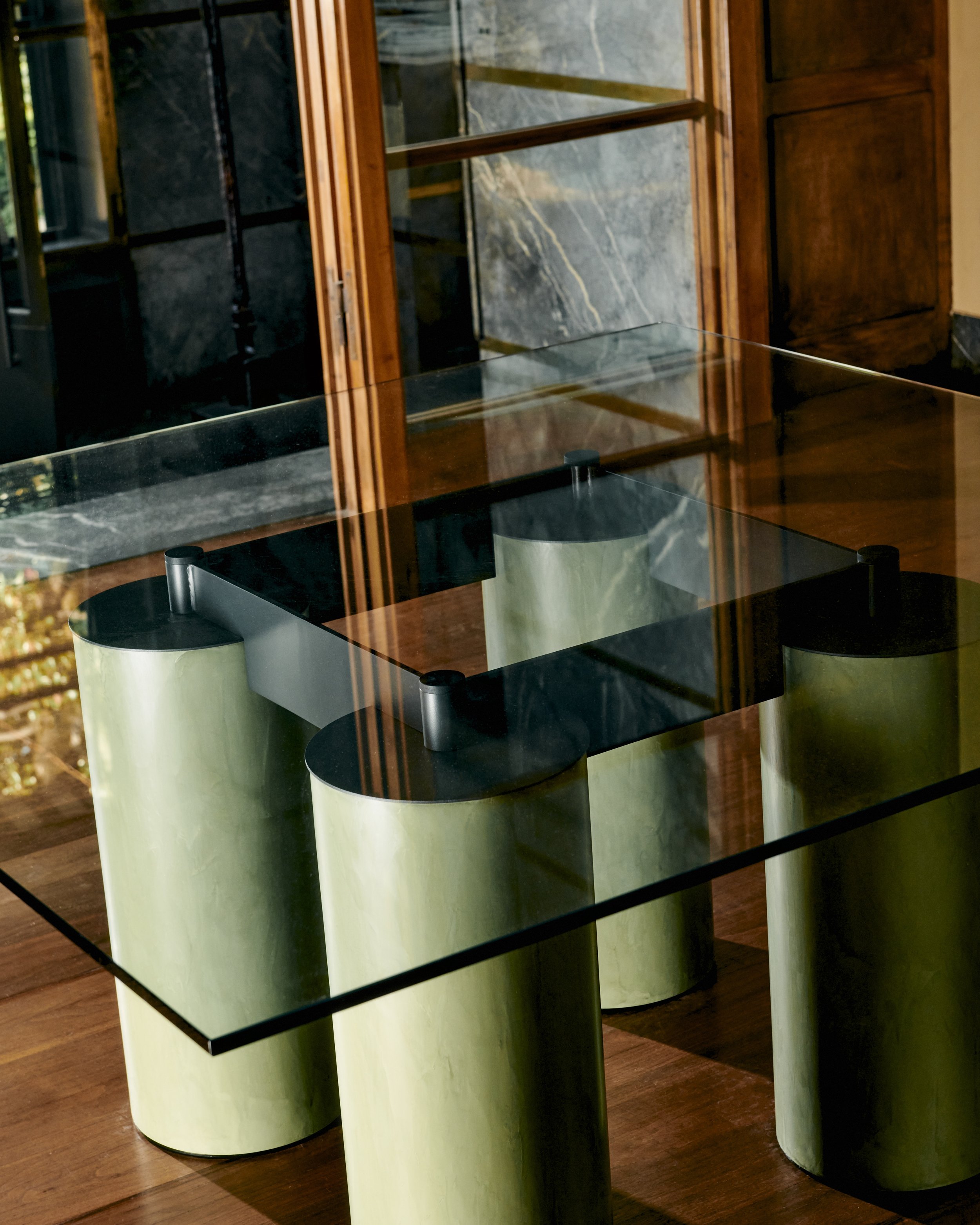Strong material and graphic contrast
Designed in 1985 and returned to production by Acerbis in 2021, Serenissimo treats the table as graphic thinking made three dimensional. Four columns set the rhythm, a steel girder spans them and the top appears to float. The object speaks in geometry, proportion, and structure, the same vocabulary the Vignellis carried from identity programs to interiors.
Lella and Massimo Vignelli built a practice that moved across fields. Husband and wife since 1957, students in Venice, an office in Milan in 1960, Unimark in 1965, Vignelli Associates in 1971 in New York with ties to Paris and Milan. Their work entered museums and daily life alike, from signage and packaging to furniture and rooms. They held to one principle, design is one. Lella put it simply: “If you do it right, it will last forever.” Among their projects for Acerbis, Serenissimo from 1985 sets that principle in plan and section, four supports, one span, one plane.
David Law joined the story with the eye of a systems designer. Art Center Los Angeles in 1961, Unimark in Detroit and Chicago in 1967, Vignelli Associates in 1978, work now seen at Cooper Hewitt. His range meets the Vignellis at the table where order and use coincide. Pull a chair and the columns leave space for legs, the span holds steady while the surface takes coffee in the morning, a laptop at noon, plates at night. The return to production is not nostalgia, it restores a tool for home and conversation. A frame for the life that gathers around it.
Dining table. The structure consists of 4 cylindrical bases (Ø 28 cm) made with a steel tube, painted in either a gun-metal grey or orbital bronze finish, or, in Encausto’s more tactile variations, in the colors terracotta, green, and white. The metal frame that holds together the 4 bases and supports the table top is painted micaceous grey.
Tabletops are available in either a square or rectangular version and in the following finishes:
Transparent glass, float glass plate characterized by transparency.
Extra clear opalescent glass, float glass plate with smooth and glossy upper side, acid-etched lower side.
Cast glass, glass plate hot molded with smooth and glossy upper side, wrinkled (for casting) and semi-transparent back-lacquered lower side, in the colors black, mustard yellow, english green, pink.
Lacquered frosted white glass, float glass plate with acid-etched upper side (silky effect to the touch), and back-lacquered lower side.
Encausto: also known as “Venetian stucco”, encausto uses a highly sophisticated technique in which a fine sand plaster is applied in successive layers, the last of which is colored with natural earth. In this stage a fluid malleable mixture of limewash is used to burn the color, changing it as it dries (in fact, “encausto” is a Latin term that derives from the Greek word “enkaustikos” or “to burn in”). In the “tallocciatura” phase, which refers to the process of manually smoothing the plaster through the skillful use of a spatula, the colored mixture is unevenly incorporated in the plaster, giving the surface the characteristic appearance of this ancient artisan tradition.
TABLETOP MATERIALS
BASE MATERIALS
Lella and Massimo Vignelli are a husband-and wife team. They studied in Venice, Italy, and in 1960 established the Massimo and Lella Vignelli Office of Design and Architecture in Milan, working with graphics, products, furniture and interiors. In 1965 they founded Unimark International Corporation, and, in 1971, Vignelli Associates, with an office in New York and liaison offices in Paris and Milan. The Vignellis’ work has been awarded numerous prizes and exhibited several times in sector publications, in the United States and abroad. Several of his works are included in the permanent collections of several museums.
David Law studied at the Art Center College of Design in Los Angeles, where he graduated with honors in 1961. In 1967 he joined Unimark lnternational as an executive designer in the Detroit and Chicago offices and, in 1978 he joined Vignelli Associates. Mr. Law’s experience includes work and graphic, packaging, environmental, exhibition, product, furniture and interior design. His work is represented in the permanent collection of the Cooper-Hewitt Museum.




















